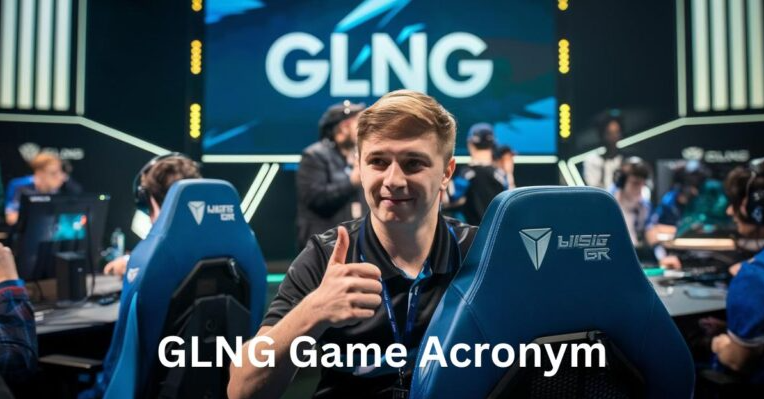Introduction to the concept of GLNG game acronym
In the ever-evolving world of video games, innovation is key. With countless titles vying for players’ attention, developers are constantly seeking ways to stand out. Enter the GLNG game acronym—a powerful tool that can transform your approach to game design and development. Whether you’re a seasoned developer or just starting your journey in the gaming industry, understanding GLNG could be a game-changer for you.
But what exactly does GLNG mean? And why should you care? This acronym holds significant weight in shaping engaging experiences that resonate with audiences around the globe. Let’s dive into what makes GLNG so important and how it can elevate your creative projects from ordinary to extraordinary.
Explanation of GLNG and its significance in game development
GLNG stands for Game Level Narrative Generator. This innovative concept plays a pivotal role in modern game development.
At its core, GLNG focuses on creating immersive narratives that enhance gameplay experience. It empowers developers to design intricate storylines that adapt based on player choices. This dynamic storytelling engages players, making them feel invested in the game’s outcome.
The significance of GLNG cannot be overstated. As games become more complex, the demand for rich narratives grows. Players today seek experiences that resonate emotionally and challenge their decision-making skills.
By integrating GLNG into the development process, teams can streamline narrative creation while ensuring depth and coherence. This leads to a more engaging product that keeps players coming back for more excitement and exploration within the game world.
Advantages of using GLNG in game design and development
GLNG provides a streamlined approach to game design. It enhances collaboration among teams by offering clear definitions and guidelines that everyone can follow.
This acronym allows developers to focus on core gameplay mechanics while minimizing unnecessary complexities. By prioritizing essential elements, GLNG encourages creativity without overwhelming the design process.
Moreover, utilizing GLNG leads to improved efficiency. Teams can make quicker decisions since they have a shared understanding of terms and concepts. This agility is crucial in today’s fast-paced gaming industry.
Additionally, games developed using GLNG often result in better user experiences. A well-structured design translates into intuitive gameplay, capturing players’ attention more effectively.
Implementing GLNG fosters innovation as it invites designers to experiment within a defined framework. The balance between structure and freedom paves the way for unique ideas to flourish in game development.
Examples of popular games that have successfully implemented GLNG
Several popular games have embraced the GLNG game acronym, showcasing its effectiveness in enhancing gameplay.
One standout example is “Minecraft.” This sandbox game allows players to explore infinite worlds and create anything they can imagine. The integration of GLNG principles enables seamless transitions between different gaming experiences.
Another notable title is “Fortnite,” which has revolutionized battle royale mechanics through dynamic gameplay elements. By implementing GLNG, developers crafted an engaging environment that keeps players returning for more action.
“Overwatch” also exemplifies the power of using GLNG in character design and team dynamics. Each hero incorporates unique abilities that enhance collaboration among players, making it a captivating multiplayer experience.
These examples illustrate how leveraging the GLNG game acronym leads to memorable interactions and enjoyable play styles across various genres.
Tips for incorporating GLNG into your own game design process
Start by familiarizing yourself with the core principles of the GLNG game acronym. Understanding its components is crucial for seamless integration into your design process.
Next, brainstorm ways to incorporate GLNG early in development. Engage your team in discussions about how these elements can enhance gameplay and player experience.
Use prototyping tools to experiment with different GLNG concepts. This allows you to visualize ideas without committing extensive resources upfront.
Gather feedback from playtesters once you’ve implemented some GLNG aspects. Their insights will help refine your approach and identify potential issues early on.
Stay flexible throughout the design process. Adapting to changes based on testing results ensures that you’re making informed decisions while keeping players engaged.
Keep an eye on industry trends related to GLNG applications in gaming. Learning from successful games can inspire innovative solutions tailored specifically for your project.
Potential challenges and how to overcome them when using GLNG
While the GLNG game acronym offers numerous benefits, it also presents certain challenges. One significant hurdle is the learning curve associated with its implementation. Developers may need time to adapt their existing workflows.
Another issue can arise from miscommunication within teams. When team members interpret GLNG principles differently, confusion ensues, potentially derailing projects.
To tackle these challenges, clear documentation is essential. Create detailed guidelines that outline how to apply GLNG effectively in your project.
Encouraging open communication among team members fosters collaboration and ensures everyone is on the same page. Regular check-ins can help address misunderstandings early on.
Additionally, consider conducting training sessions or workshops focused on GLNG concepts. This investment in knowledge will empower your team and streamline development processes.
Conclusion
The GLNG game acronym offers a fresh perspective on game design and development. Understanding its meaning can open up new avenues for creativity and technical innovation in gaming. As developers, harnessing the advantages of GLNG can significantly elevate your projects, allowing you to create engaging experiences that resonate with players.
By studying successful examples from popular games, you can glean insights into effective implementation strategies. Incorporating GLNG into your own design process requires thoughtful planning and experimentation but can lead to remarkable outcomes.
While challenges may arise during integration, being proactive about potential issues will help ensure a smooth transition. Embrace feedback and iterate based on player responses to refine your approach.
As the gaming industry continues to evolve, those who adapt and explore concepts like the GLNG game acronym will undoubtedly thrive in this dynamic landscape. The possibilities are vast; it’s time to unlock them through innovative thinking.


